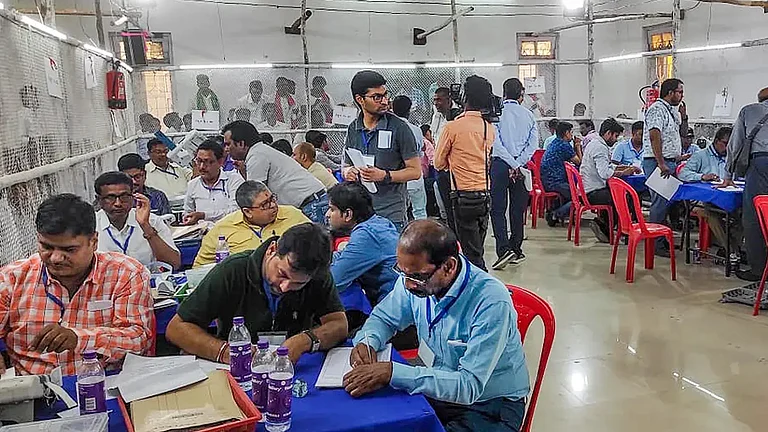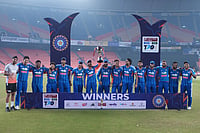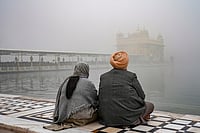
But the difficulties of winning the US Congress can't be minimised. "What we will see is the biggest battle since the AWACS sale to the Saudis," remarked an official. Shocked and awed, non-proliferation hawks are already marching to Capitol Hill, briefing staffers and giving them ammunition against the nuclear bargain with India. Congressman Ed Markey, a Massachusetts Democrat, attached an amendment against the deal to the energy bill the day Manmohan addressed a joint session of the US Congress. Fortunately, the senators on the joint conference committee defeated it. Said Markey, "We are playing with fire by picking and choosing when to pay attention to the existing non-proliferation treaties."
Washington's abundant think-tank community, which includes nuclear experts like Michael Krepon, president of the Stimson Center, and George Perkovich, vice-president at the Carnegie Endowment, fear the breakdown of the nuclear regime. Convincing them would require not only good arguments but the miracle of revelation that exceptionalism is the only answer for a rising India.
The drama will unfold over the next six months. And this one has a heroine—secretary of state Condoleezza Rice. Steely and task-oriented, she has transformed America's India policy in line with Bush's vision in four monthsflat. Nothing had really moved in the first Bush administration but as soon as Rice moved to the State Department, the stars were aligned, since the Pentagon and the National Security Council were already onboard. The big game began with Rice's March visit to New Delhi when she presented a roadmap. The March 26 briefing, when a senior US official declared the goal of the new policy was "to help India become a major world power in the 21st century", was a loud signal to the world. Broad contours began to take shape when Foreign Minister Natwar Singh came to Washington a month later. Rice secured a firm appointment for him with Bush and Natwar came back convinced the Americans were serious.
An internal debate began in the Indian establishment—should New Delhi be diffident and strike a small deal or go for broke? The conservatives didn't want to risk the PM's visit on a gamble but the bold boys reasoned that even to get nuclear fuel for the US-built Tarapur reactor, India would have to make the same promises it would if it made the grand bargain. So why not shed the nuclear pariah status with one single stroke? The two camps existed on the US side too. Interestingly, the broad parameters were quickly agreed upon—India will not do "even a millimeter" more than a nuclear state and the US will lay the foundation to amend the laws. What took long was striking a balance and crafting a fair deal given that even a hint of inequality could mean sure death. The 30 lines spread over two paragraphs detailing the obligations of both countries raised stress levels to red. A litre of blood was spilled for every word, joked one official. Every comma and semi-colon was intensely negotiated.
Even a day before the Bush-Manmohan meeting, there was a nervous tentativeness about the whole thing going up in smoke and the visit being labelled a failure. Once again "the lady", who has a large fan club among Indian officials and media, came to the rescue when she decided to meet Foreign Minister Natwar Singh, squeezing in a 50-minute session on Sunday evening for which he rushed back from New York, leaving the G-4 lunch. It turned out to be a "critical" meeting. Rice's aim was to break the logjam. Final details still eluded the dogged teams, and she came for breakfast to Blair House where the Indian delegates were staying. She met the PM and Natwar Singh on Monday morning, before the White House welcome and guard of honour. No others were at the table. Indian officials were enamoured by her doggedness.
As Bush began his meeting with Manmohan, the joint statement was still not finalised. Even as the two leaders later addressed a press conference, National Security Advisor M.K. Narayanan was seen exchanging notes with Nick Burns, undersecretary of state for political affairs. The main problem was over the separation of India's civilian and military programmes and how and when that would be done. The fight was over real issues. "Rice was driving the process on the US side while Natwar Singh's big picture was very clear," said one source. But the devil is in the details and there was an abundance of devilish details. The composition of the Indian delegation was extremely important. It was no coincidence that Anil Kakodkar, secretary of the Atomic Energy department, was a member of the delegation. The idea was to give the concerned departments a stake in the agreement. A pragmatic and reasonable person, who does not carry a larger-than-life ego like some of his predecessors, Kakodkar was on the spot to sign off on the final words. Similarly, secretary of the department of space, G. Madhavan Nair, was present to clarify his needs.
Late Monday afternoon, past many media deadlines with adrenalin levels rising, the four- page joint statement was finally delivered. It was stunning in its breadth andscope. Fuel for not just Tarapur but other reactors, invitation to join international nuclear research and a commitment to change the Nuclear Non-ProliferationAct. Apart from the nuclear deal, which hogged the limelight, the joint statement contained many important initiatives—on the economy, on promoting democracy, on building knowledge-based links, on space, on security, on non-proliferation, on a second Green Revolution, among others. The US invited India to join the Manned Space Programme atNASA. It was a monsoon of agreement, drenching in its totality. And satisfying for both sides.

Nicky Burns, the suave undersecretary, summed it up best: "It is abundantly clear to us that this is a significant point of departure for our foreign policy, not just in South Asia, but worldwide." India was keen to have a broad-based agenda with the US to dispel the notion that the main planks are weapon sales or strategic cooperation. As Ambassador Ronen Sen says, the ultimate aim is to generate employment, uplift people from rural poverty and distribute the fruits of development. "This relationship...is a process and one must look at it as an integrated whole."
How the Washington landscape has changed is also remarkable. Not only has officialspeak metamorphosed from a tight, barely correct and grudging acknowledgment of India to an effusive, almost euphoric endorsement; several former US ambassadors, now working as highly paid lobbyists of powerful groups, are busy plugging for lucrative contracts for their clients. "The larger and more open India's economy becomes, the more influential sectors and actors in the US will want our government to find common ground with India. This is not sinister, but it is important to understand," says Perkovich.

A related reason is China, which many see as the only state that could conceivably rival US power. But the PM is loath to be cast as the Great Wall of India against China and he articulated as much before leaving. "I don't think our relationship with the United States is at the cost of our relationships with China, with Russia or, for that matter, the EU." Senior Indian officials say Beijing and Islamabad are suffering "deep anxiety" as they examine the American willingness to go this far for India. China was the only country to officially protest against the US decision to brief India on the Patriot anti-missile PAC-III system.
Robert Blackwill predicted on the eve of Manmohan's visit four important gains for India by the end of the second Bush administration—India will have become a permanent member of the UN Security Council, the United States would have comprehensive nuclear assistance in place, ditto sale of major US weapons systems and significant space cooperation. "There is a bipartisan enthusiasm that goes deeper than individuals and the political elite," he said. Of the four predictions, at least two—nuclear and space cooperation—have already come true.

























